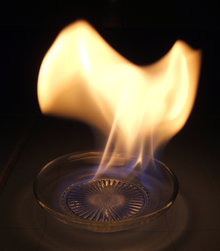The name and the article do not fit each other; the article name suggests an article we need; and the article as written needs to be stored under an accurate name. (2023-03-28) |
This article needs additional citations for verification. (January 2012) |

Various alcohols are used as fuel for internal combustion engines. The first four aliphatic alcohols (methanol, ethanol, propanol, and butanol) are of interest as fuels because they can be synthesized chemically or biologically, and they have characteristics which allow them to be used in internal combustion engines. The general chemical formula for alcohol fuel is CnH2n+1OH.
Most methanol is produced from natural gas, although it can be produced from biomass using very similar chemical processes. Ethanol is commonly produced from biological material through fermentation processes. Biobutanol has the advantage in combustion engines in that its energy density is closer to gasoline than the simpler alcohols (while still retaining over 25% higher octane rating); however, biobutanol is currently more difficult to produce than ethanol or methanol. When obtained from biological materials and/or biological processes, they are known as bioalcohols (e.g. "bioethanol"). There is no chemical difference between biologically produced and chemically produced alcohols.
One advantage shared by the four major alcohol fuels is their high octane rating. This tends to increase their fuel efficiency and largely offsets the lower energy density of vehicular alcohol fuels (as compared to petrol/gasoline and diesel fuels), thus resulting in comparable "fuel economy" in terms of distance per volume metrics, such as kilometers per liter, or miles per gallon.